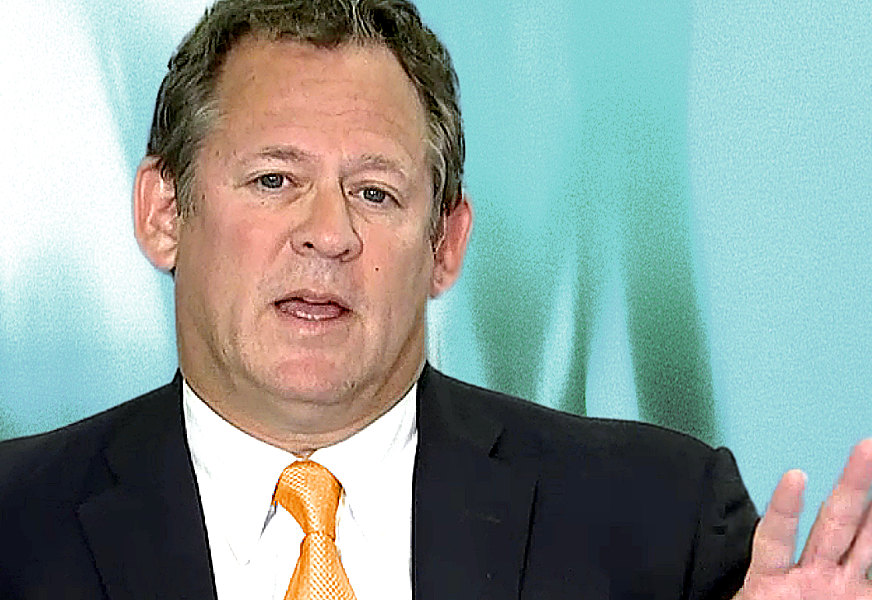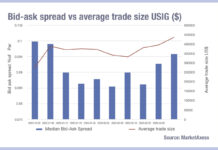
Rick Rieder, BlackRock’s chief investment officer of Global Fixed Income, co-manager of the BlackRock Fixed Income Global Opportunities fund and BGF Global Bond Income fund has issued a statement following yesterday’s policy statement from the Federal Reserve Bank:
‘As we outlined in detail in mid-March, the current period of monetary policy action is, in a very real sense, the more understated Chair Powell’s “Mario Draghi Moment” where like the former President of the European Central Bank, he’s effectively committed to “do whatever it takes” to aid the economy through this extraordinarily stressful period. Those actions, of course, began in mid-March when the FOMC cut its Fed Funds policy rate by an historic 100 basis points, to a 0.0% to 0.25% range, as well as cut its bank borrowing cost from the discount window by 150 basis points, to 0.25%. In both the Committee’s policy statement, and in Chair Powell’s press conference, it was made abundantly clear that the “Federal Reserve is committed to using its full range of tools to support the U.S. economy in this challenging time, thereby promoting its maximum employment and price stability goals.”
Having delivered a series of crisis rescue programs intent on stabilizing various market segments, and on improving market functioning and liquidity, the FOMC has at this meeting taken the opportunity to begin laying out the transition from emergency support of market functioning to a longer-term Large-Scale Asset Purchases regime. And to that end, we believe the central bank will scale asset purchases to effectively offset US Treasury issuance, to maintain an accommodative term structure of rates, but critically the FOMC has also utilised language that maintains optionality of action, as the Committee doesn’t want to box in policy, or forestall the flexibility it may require. Other than potentially laying out an average inflation targeting goal later this year, the Committee can maintain a highly credible “whatever it takes” stance without needing to hew to a set of pre-determined quantitative goals, and in fact pursing that path makes a great deal of sense.
Still, our expectation is that the Fed will purchase roughly equivalent to at least $1.5 trillion in Treasuries over the remainder of the year (~$200 billion per month). With asset purchasing in roughly these amounts, as well as everything the Fed has already done, the magnitude of the policy response to this economic crisis is simply stunning. Stepping back to provide a bit of context, from the founding of the Federal Reserve at the end of 1913, until 2008, or roughly 95 years, the central bank’s balance sheet grew from essentially $0 to $900 billion. Yet in response to the Global Financial Crisis of 2008/09, from 2008 through 2014 (and encompassing QE1, QE2 and QE3), the Fed’s balance sheet grew four-fold, to nearly $4.5 trillion, or at a pace of roughly $3 billion per day.
By year end, we anticipate the Fed’s balance sheet will have grown by a staggering $7 trillion in an effort to deal with the fallout of the Coronavirus Crisis, or a pace of nearly $26 billion per day over a 270-day window. To provide a sense of scale, Fed asset purchases through year-end will equate to nearly one third of U.S. GDP, and the total Fed balance sheet at year end is likely to reside at more than 50% the size of the U.S. economy. Looked at differently, Fed purchases through year-end will amount to nearly 28% of the S&P 500 Index market capitalization or will equate to nearly 20% of the U.S. Aggregate Bond Index, as of this writing (see graph). The policy response has been monumental and highlights the Fed’s determination to not lose this battle.
We think that with its recent actions, the Fed has put a stake in the ground as the lead central bank in the world, while simultaneously it has shown itself to be a partner with the rest of the world. If required, the Fed can go bigger, or longer, in the execution of its programs, but it’s also critical to emphasize the policy areas that Chair Powell suggested the Committee wasn’t interested in going to. Specifically, Chair Powell indicated that negative policy rates were not appropriate for the U.S. economy, whereas asset purchases and forward guidance were held up as more appropriate policy tools. In our view, this is very important, since following in the path of Europe or Japan, in terms of negative rate policy, would be counterproductive in our view.
In our view, the only plausible parallel to the actions that the Fed is currently undertaking is its wartime role of supporting the country and the economy during the Second World War. And just as it did then, the FOMC will do whatever is needed, for as long as it is needed, to ensure a vigorous recovery and speed the return of the labor market to full employment and inflation to target. By maintaining both market functioning and highly accommodative rates, the Fed is facilitating the fiscal policy response, and it will continue to flexibly adapt monetary policy to economic conditions as they evolve through the crisis period and beyond it.’
©The DESK 2020
TOP OF PAGE

























